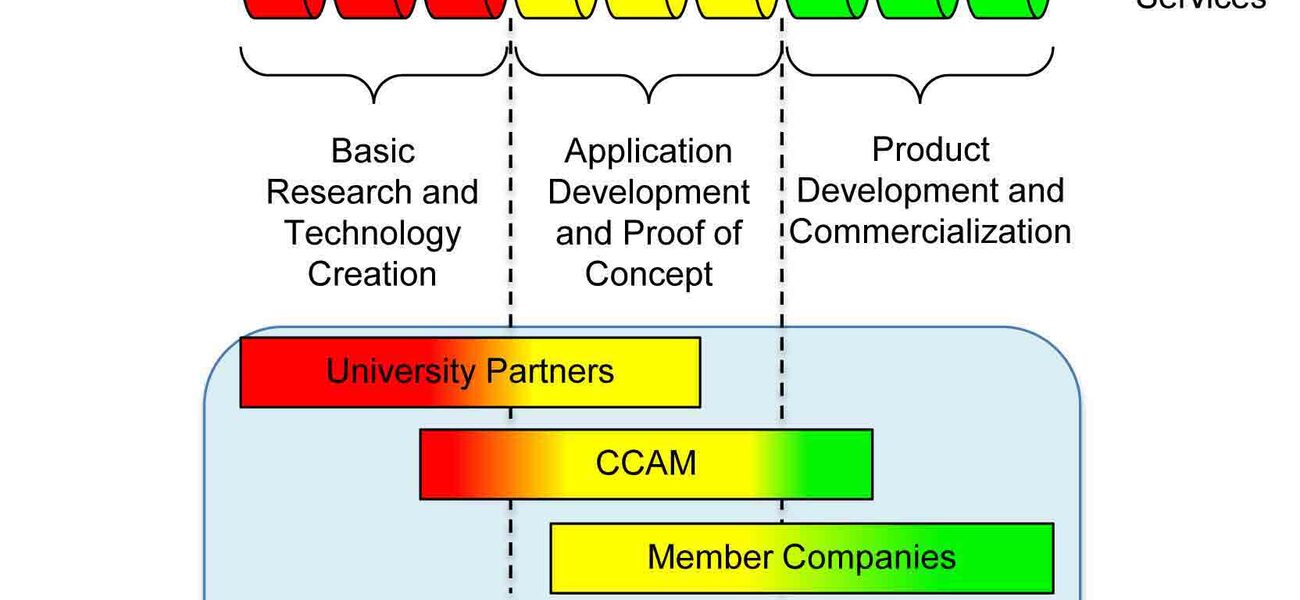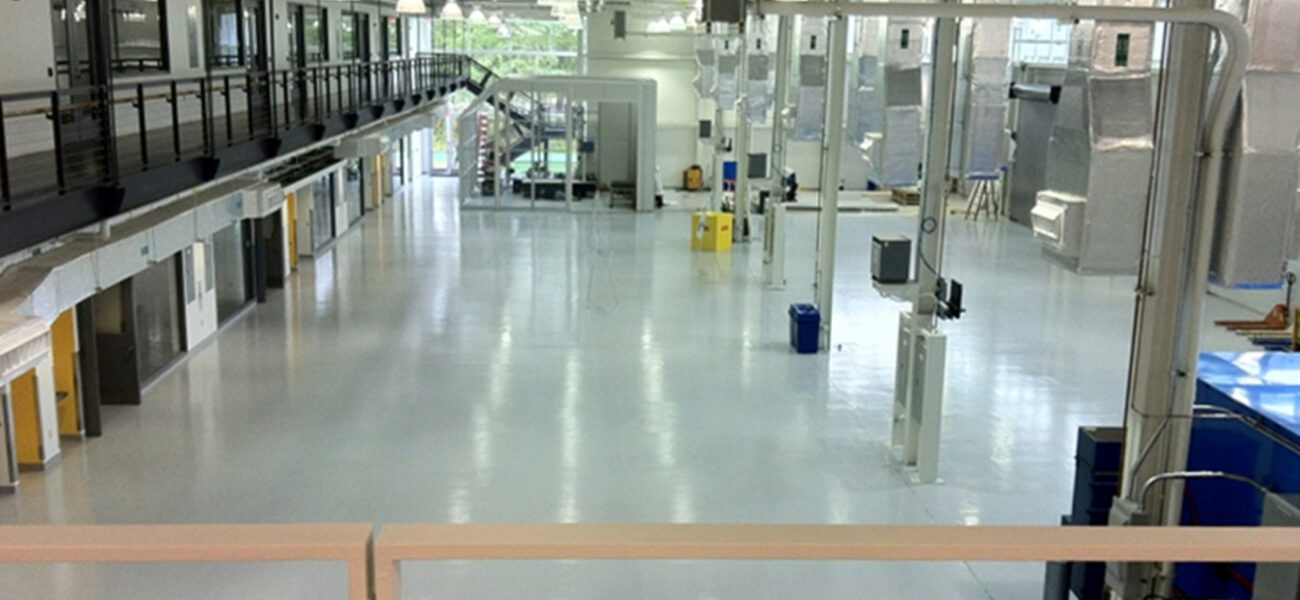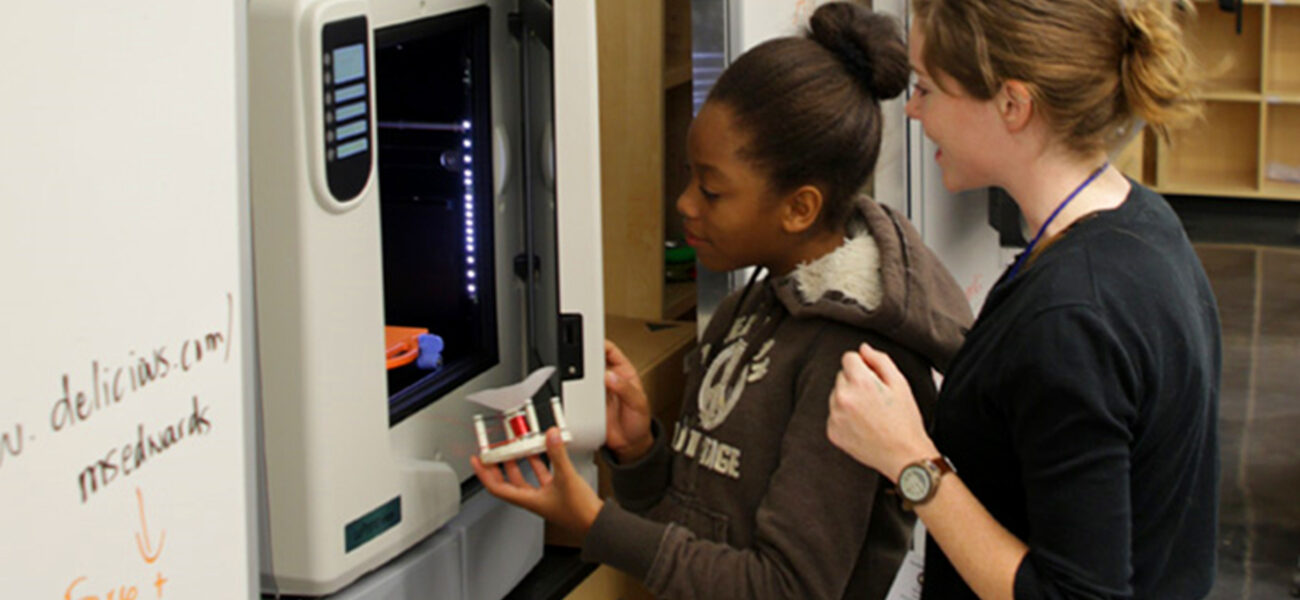A unique public-private partnership is fast-tracking advanced manufacturing research and spurring development of the industry’s next-generation workforce, according to Barry Johnson, senior associate dean at the University of Virginia (UVA). The Commonwealth Center for Advanced Manufacturing (CCAM) is an industry-driven collective with an applied research facility near Richmond that connects schools where research originates with companies who will apply it to commercialization. Initially a consortium—fostered by the Commonwealth of Virginia, and including UVA, Virginia Tech, and Rolls-Royce—CCAM has grown to comprise 20 private companies, four universities, and NASA.
Advanced manufacturing—the extensive use of cutting-edge technology for production—is a preferred method of creating high-precision, high-performance products, such as jet aircraft engines or components for nuclear applications. By limiting human error and speeding up production, such technologies reliably transform ideas into marketable products. The problem has often been the risks a manufacturer takes in bringing a laboratory prototype to the next “technology readiness level.”
“If you have an idea that isn’t in the form where it can be delivered as a product, we call that Level One,” says Johnson. “If it’s ready to be turned out in production and put in front of consumers, that’s Level Nine.”
The so-called “Valley of Death” encompasses the stages from research to proof-of-concept to demo. “It’s very expensive to get to where you can manufacture something at an industrial scale, and it’s where a lot of ideas fail—when companies decide that they can’t afford the risk. That’s why CCAM is important: Companies can share both cost and problem-solving resources,” says Johnson. “If you can get over that hump, you have a tremendous innovation that you can disseminate. It turns the Valley of Death into a valley of opportunity.”
From a Few Buildings to an “Advanced Manufacturing Innovation Zone”
The germination of CCAM began when Rolls-Royce issued an RFP for a new factory, specifically targeting states with advanced manufacturing and engineering capabilities at their universities. The University of Virginia’s collaboration with the Commonwealth of Virginia and Virginia Tech won out in the form of CCAM.
“The concept behind CCAM stems from the fact that companies are not investing in fundamental research the way they did 30 years ago. They need connectivity to universities for that capability,” says Johnson. “I’m not aware of anything like CCAM that existed in the United States at the time. The need was stimulated by the private sector; the idea was conceived by the public sector; and the consortium model is a fully integrated public-private partnership enabled by federal and state funding.”
Approximately $4 million in funding from the U.S. Economic Development Administration and $2.5 million from the Commonwealth of Virginia was added to the University of Virginia’s $11.7 million stake. “About $15 million in equipment came from in-kind donations that the corporate members made,” says Johnson. “That consisted not only of a commitment to give us that equipment, but also to keep it up to date with the latest state-of-the-art equipment that they have within their product portfolio.”
The emphasis is on applied research, with manufacturing feasibility and practical relevance a high priority. “The core facility required some capabilities that universities, for example, don’t typically have,” says Johnson. “It has the real equipment that is used in a modern advanced manufacturing environment. So when we take an idea from the research program, we have the ability to go into the lab and confirm that it will indeed work with automation, optimization, and the process-oriented capabilities within that environment.”
CCAM’s ultimate goal is to create an “Advanced Manufacturing Innovation Zone,” a manufacturing cluster that covers roughly the lower third of Virginia. Currently, the core applied research facility is up and running, as is the associated Commonwealth Center for Aerospace Propulsion Systems (CCAPS) and Rolls-Royce factories in Crosspointe, Va. A workforce development program will ultimately provide skilled workers, as well.
“The goal is for the companies to be able to tell us what jobs 10 years from now are going to be like, so that we can educate a cadre of workers that have the skills needed by the future of advanced manufacturing,” says Johnson. To date, $40 million of a $100 million target for this program has been assembled, with state and federal governments being petitioned to help bring up the total. The funds will be used for a network of training centers throughout the manufacturing zone, with four regional training centers and an apprentice academy.
Governance and Intellectual Property
CCAM is governed by three major bodies: a board of directors, which includes members from each of the founding universities and companies; an industry operations board with select members who oversee day-to-day operations; and a technical advisory council, tasked with developing the “research roadmap.” “The roadmap is defined as the milestones and critical achievements we are trying to accomplish and the technologies we need to work on to get us there,” says Johnson.
CCAM member companies pay an annual fee for a seat at the table, money that is used to fund two types of research. “Directed research is for a company that has a specific problem they need solved. Generic research is where companies collectively have a problem. The annual fee is split 50-50 between them,” says Johnson. “Then the corporate members at the highest level have the option of adding as much directed research funding as they want.” The results of the generic research are owned by CCAM, and all of the corporate members hold a non-exclusive, royalty-free license to commercialize resulting technologies worldwide. Directed research results are owned by the company that commissioned the research. Federal sponsor funds are combined with additional member funding for collaborative research that is defined by the sponsors; intellectual property rights are retained by the creators of the research.
The Innovation “Ecosystem”
Johnson describes the collaboration fostered by CCAM and the Innovation Zone as an “ecosystem,” with public and private entities interacting systemically and to mutual advantage. “Universities are really good at coming up with solutions looking for problems,” he says. “Consumers have problems that technology and innovation can solve; and industry has an obvious interest in solving those problems.”
At the state government level, there is an interest in creating an economic engine that starts with educating the next generation of the workforce and maintaining a robust middle class. Although automation has slashed the need for less-skilled laborers, the jobs that remain require a higher skill set, and as a result have higher pay. Even for kids that don’t necessarily want to go to college, advanced manufacturing offers good salaries and career opportunities. At Rolls-Royce, now primarily a gas turbine concern, a production floor manager may earn more than $100,000 per year. “Right out of high school, a new employee could expect to earn $25,000-35,000 with full benefits,” says Johnson.
In fact, CCAM is already helping to reach into the K-12 environment. New labs at Charlottesville-area Buford Middle School and Jack Jouett Middle School are using engineering to teach science and math to students in grades six through eight. “3D printing is a wonderful way to demonstrate manufacturing concepts,” says Johnson. “You can design a product, prototype it, and hold it in your hand.” Teachers are provided with lessons and online live communication with UVA faculty for help. Funded by a state grant, three additional such academies are planned, expanding to schools outside of Charlottesville.
The eminent practicality of the CCAM model has not been lost on businesses that rely on advanced manufacturing. “We expect the consortium to reach 35 to 40 members,” says Johnson. Government has also taken notice; Johnson presented the CCAM concept to a national governors’ association, which resulted in the consortium’s being lauded in a best practices report on economic development. At the federal level, President Obama has proposed building a National Network for Manufacturing Innovation (NNMI). As part of this network, regional hubs that, like CCAM, are public-private partnerships would focus on applied research as a spur for economic growth. The topic was part of Obama’s 2013 and 2014 State of the Union addresses, with a proposed build-out of 45 Institutes for Manufacturing Innovation (IMIs). In February 2014, the White House announced the inception of two IMIs in Detroit and Chicago, both consortiums of businesses and universities, focused on metals manufacturing and digital and design technologies respectively. In Indiana, Indiana University-Purdue University Columbus, Ivy Tech Community College, and Purdue College of Technology now share a 43,000-sf advanced manufacturing facility that combines education with workforce and business development programs.
Just as in an ecosystem, interactions among the public and private entities that are part of CCAM drive further interactions. Each sector seems to be thriving from the synergy. Students and universities are put to work on stimulating, real-world problems; companies are pooling resources and tackling common problems; consumers get high-quality, innovative products; and local economies win out with new, well-paid manufacturing facility jobs. In addition to R&D savings, the corporate members of CCAM have new workers lined up, which Johnson views as vital to success. “When I was helping recruit those founding corporate members, every one of them told me the exact same thing: The technology is great and wonderful, but my biggest problem is I can’t get enough people who have the skills that I need in my factories and in my company in general,” he says. Within the CCAM ecosystem, enticing new programs for younger students may solve this problem, while setting them on the path to fulfilling careers.
By Liz Batchelder
This report is based on a presentation Johnson gave at Tradeline’s 2014 International Conference on Research Facilities.



